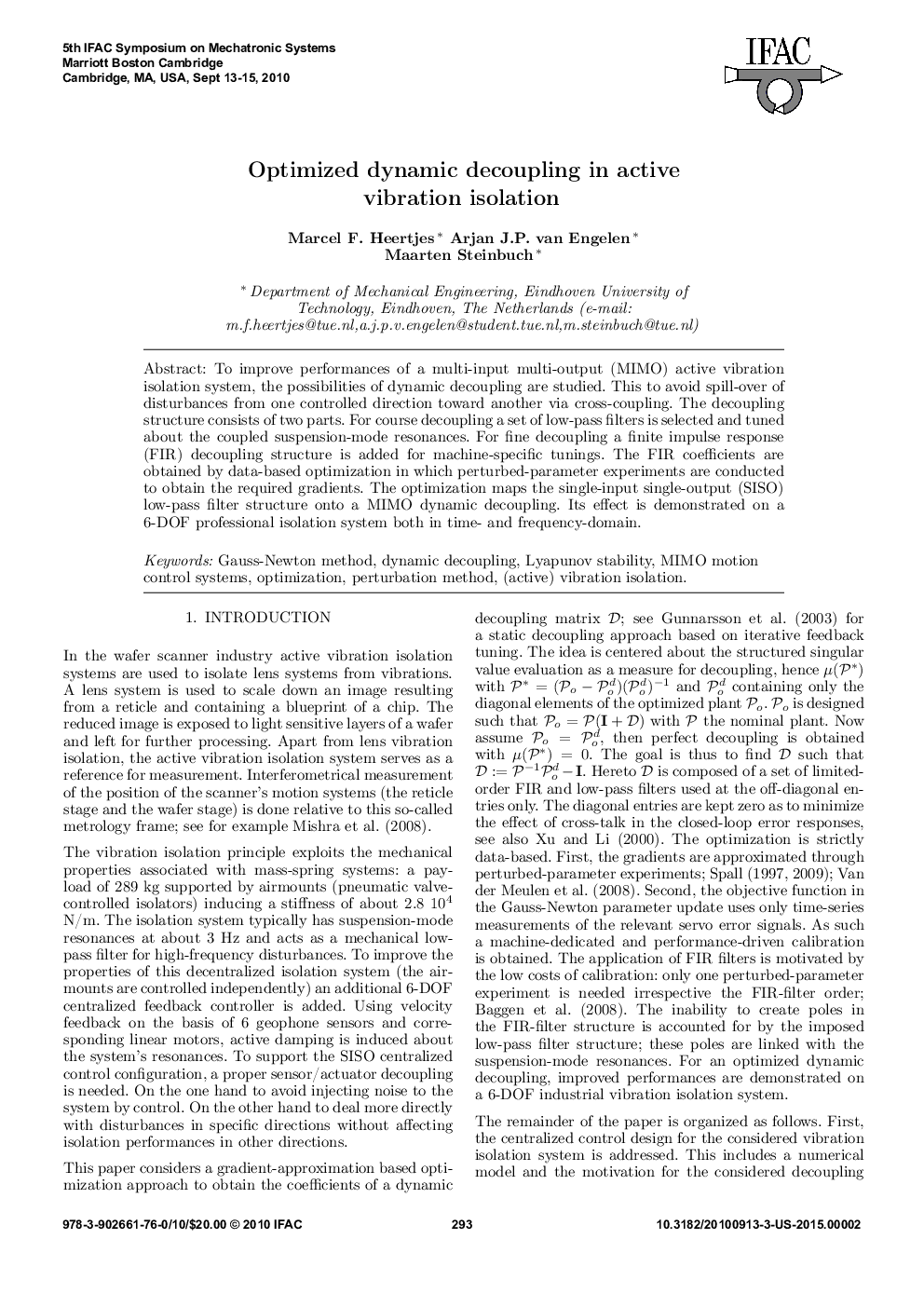| Article ID | Journal | Published Year | Pages | File Type |
|---|---|---|---|---|
| 715891 | IFAC Proceedings Volumes | 2010 | 6 Pages |
To improve performances of a multi-input multi-output (MIMO) active vibration isolation system, the possibilities of dynamic decoupling are studied. This to avoid spill-over of disturbances from one controlled direction toward another via cross-coupling. The decoupling structure consists of two parts. For course decoupling a set of low-pass filters is selected and tuned about the coupled suspension-mode resonances. For fine decoupling a finite impulse response (FIR) decoupling structure is added for machine-specific tunings. The FIR coefficients are obtained by data-based optimization in which perturbed-parameter experiments are conducted to obtain the required gradients. The optimization maps the single-input single-output (SISO) low-pass filter structure onto a MIMO dynamic decoupling. Its effect is demonstrated on a 6-DOF professional isolation system both in time- and frequency-domain.
